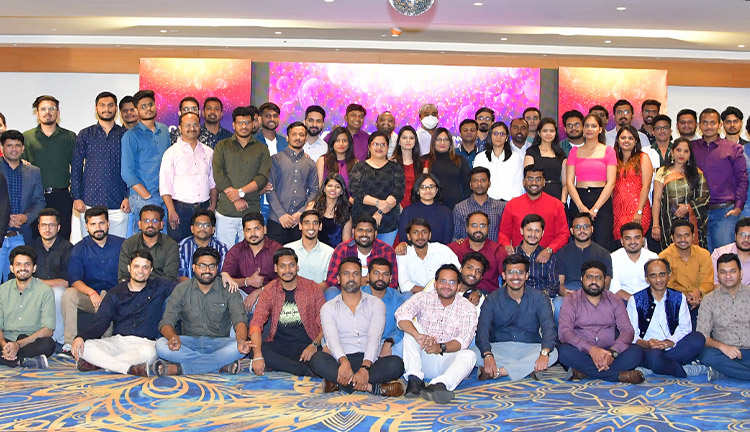Vulnerability scanning for compliance and regulations

Posted By
Abhijit Kharat

Vulnerability scanning's ultimate goal is to safeguard sensitive data. It is a critical component of any security strategy, enabling you to proactively identify and mitigate security vulnerabilities before they are exploited. The WannaCry ransomware attack of 2017, which affected 230,000 computers and crippled businesses worldwide, is an example of the consequences of neglecting vulnerability management. That's the reason why compliance regulations mainly exist.
Regulatory compliance is an organization's adherence to laws, regulations, standards, guidelines, and specifications set forth by governments, agencies, trade groups, and other regulatory bodies. Generally, regulations that drive compliance are implemented to protect someone or something. Staying ahead of potential threats like the WannaCry ransomware attack can protect your organization's sensitive data, maintain compliance with industry standards, and minimize the risk of costly data breaches.
What are the standards and regulations that demand vulnerability scans?
Several industry standards and regulations mandate vulnerability scanning to ensure data security. HIPAA, for example, requires healthcare organizations to implement safeguards to protect patient health information (PHI). This includes conducting regular vulnerability assessments and implementing risk management processes. ISO 27001, an international standard for information security management systems, outlines specific requirements for vulnerability management, such as identifying and assessing vulnerabilities, implementing appropriate controls, and regularly monitoring and reviewing the effectiveness of security measures. While NIST and PCI DSS also address vulnerability scanning, HIPAA and ISO 27001 are particularly relevant for organizations handling sensitive data, such as healthcare information and financial data.
How does vulnerability scanning help maintain compliance?
Regulatory requirements are becoming increasingly stringent and far-reaching, covering various industries and data types. Today, many industry standards and regulations mandate vulnerability scanning and timely remediation of identified threats as key security control measures. Severe financial penalties are imposed on organizations that fail to comply with regulations. Imagine the hassle of going through a lawsuit or investigation for security incidents caused by vulnerabilities. It becomes crucial to choose the right vulnerability scanner for your security needs based on the type of organization you are.
At Opcito, it is our job to help organizations demonstrate compliance with industry standards and regulations by ensuring customers identify and rectify security weaknesses that could lead to violations. This is how we help:
- Identification of security weaknesses: Vulnerability scanning acts as your organization's early warning system. It systematically identifies potential security weaknesses, proactively guarding against unauthorized access, data breaches, and operational disruptions. You can significantly reduce the risk of non-compliance penalties and costly security incidents by proactively addressing these vulnerabilities.
- Prioritization of vulnerabilities: Vulnerability scanning not only identifies security weaknesses but also prioritizes them based on their potential impact on compliance. This helps organizations focus their remediation efforts on the most critical threats, ensuring they address the biggest risks and maintain compliance with industry standards.
- Demonstration of due diligence: Regular vulnerability scanning demonstrates that an organization is proactive in managing its security posture and taking steps to protect sensitive data. This is crucial for customers who want to see evidence of your organization's commitment to compliance and healthy security practices.
- Continuous improvements: A robust vulnerability scanning program, anchored by regular scans, patch management, and incident response planning, provides the essential structure for continuous security enhancement. It helps you better identify trends and patterns in vulnerabilities, giving you room to improve your overall security posture over time. By addressing vulnerabilities as they are discovered, organizations can reduce the risk of future breaches.
What are the challenges of achieving compliance through vulnerability scanning?
Let’s briefly go over the common challenges that I’ve seen organizations face when it comes to adopt vulnerability scanning processes to keep up with industry regulations.
- Resource constraints: Limited budget for vulnerability scanning tools, training, and ongoing maintenance and lack of skilled security personnel can be challenging, especially for smaller organizations.
- False positives and negatives: Tools may generate inaccurate results, reporting vulnerabilities that don't actually exist, or false negatives, missing critical vulnerabilities, leading to wasted resources and a false sense of security.
- Integration challenges: Compatibility issues with existing IT infrastructure and security systems can be complex and time-consuming, and large amounts of data can overwhelm security teams.
- Changing threat landscape: Emerging vulnerabilities are discovered and exploited at a rapid pace, making it challenging to keep up with the latest threats. Also, industry regulations and standards may change, requiring organizations to keep adapting.
- Complexity of large-scale environments: Organizations with complex IT environments, including multiple systems, networks, and applications, find it difficult to achieve comprehensive vulnerability coverage due to the sheer size of operations.
Practical guide to implementing effective vulnerability scanning in the cloud
What are the best practices to achieve compliance through vulnerability scanning?
Here’s what you must do to ensure you're on the right track with vulnerability scanning for compliance.
- Prioritize and allocate resources: Develop a comprehensive vulnerability management strategy that aligns with business objectives and regulatory requirements. Allocate sufficient resources to purchase necessary tools, train staff, and maintain the program.
- Choose the right tools: Carefully evaluate vulnerability scanning tools based on accuracy, scalability, integration capabilities, and cost-effectiveness and configure them to meet specific needs and reduce false positives and negatives.
- Develop a comprehensive program: Establish clear policies and procedures for vulnerability scanning, remediation, and reporting and provide training to staff on its importance and how to use the tools effectively.
- Address false positives and negatives: Implement processes to verify vulnerabilities and prioritize remediation efforts based on risk. Fine-tune scanning tools to improve accuracy and reduce false positives and negatives.
- Stay updated on threats and regulations: Keep an eye on the threat landscape and stay informed about emerging vulnerabilities and exploits. Track changes in industry regulations and adjust vulnerability scanning programs accordingly.
- Continuous improvement: Conduct regular reviews of the vulnerability scanning program to identify areas for improvement. Leverage automation to streamline processes and reduce manual effort. AI-driven vulnerability scanning looks promising.
Stay safe, stay compliant
Compliance regulations are increasingly important in today's world. We've all seen headlines about vulnerable systems causing major headaches when breached. Vulnerability scanning is definitely a worthwhile investment. Strong compliance not only avoids hefty fines and legal risks but also protects your valuable data and reputation.
If you're looking to set up a robust vulnerability scanning process or strengthen your existing one, Opcito can help! Our experts can guide you through the process and ensure you're on the path to achieving compliance with confidence. Contact us at contact@opcito.com today!
















